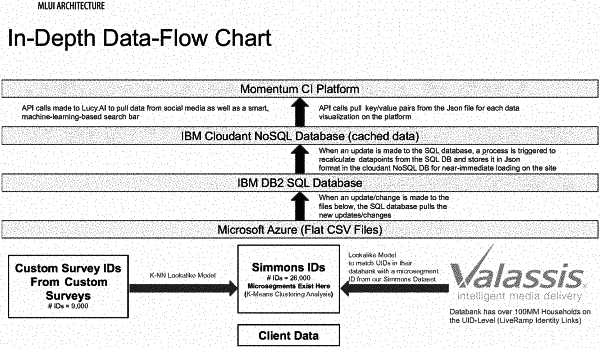| CPC G06F 16/2433 (2019.01) [G06F 16/23 (2019.01); G06N 5/04 (2013.01); G06Q 10/10 (2013.01); G06Q 30/0203 (2013.01); G06F 40/151 (2020.01)] | 18 Claims |

|
1. A database caching engine apparatus, comprising:
a memory;
a component collection in the memory;
a processor disposed in communication with the memory and configured to issue a plurality of processor-executable instructions from the component collection, the processor-executable instructions configured to:
detect, via at least one processor, an update to a survey data file, the survey data file configured to include updated survey data comprising any of: ambient social, consumer interaction, point of sale, third party, internet of things, and internal survey data;
store, via at least one processor, the updated survey data in a SQL database, the SQL database configured to utilize a composite index of the updated survey data that optimizes database query time;
determine, via at least one processor, a set of affected entity segment identifiers, the set of affected entity segment identifiers configured to include a respective entity segment identifier upon determining that the updated survey data includes a respondent identifier associated with the respective entity segment identifier, an entity segment identifier configured to identify an entity comprising any of: person, item of manufacture, service, asset, brand, ad, category of manufacture, category of service, category of person, demographic, sentiment;
determine, via at least one processor, a set of affected category identifiers, the set of affected category identifiers configured to include a respective category identifier upon determining that the updated survey data includes an allowable response question identifier associated with the respective category identifier;
determine, via at least one processor, a set of affected cognitive intelligence (CI) datapoint identifiers, the set of affected CI datapoint identifiers configured to include CI datapoint identifiers associated with each combination of: an affected entity segment identifier and an affected category identifier;
instantiate, via at least one processor, a set of cache datastructures, the set of cache datastructures configured to include a cache datastructure for each affected CI datapoint identifier, a cache datastructure configured as a key-value pair comprising an associated affected CI datapoint identifier and a CI datapoint value corresponding to the associated affected CI datapoint identifier;
calculate, via at least one processor, a set of metrics for each allowable response question identifier associated with each affected CI datapoint identifier using the updated survey data; and
store, via a cache datastructure via at least one processor, the calculated metrics for each affected CI datapoint identifier in a NoSQL database, the NoSQL database configured to act as cache for generating visualizations.
|